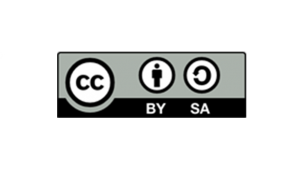- how to frame the assessment regime (fears of being sued by students)
- students over-grading themselves in self evaluation (this is a continuing problem at King Alfred’s college with teacher training where 25% of the student’s overall course mark is through peer & self assessment)
- changes in assessment and teaching & learning procedures may result in courses needing re-validation which increases work load for lecturers.
- Asymmetrical development in institutions (e.g. between faculties and educational development unit)
- Staff need training & induction in new assessment and teaching & learning procedures and continuing support in implementing them (institution may not help ease the burden of increased work loads)
- Audit culture – focus on outcomes rather than process at the level of government/institution authorities puts pressure on lecturers to seek the most economical solutions at the expense of the students’ developmental learning process.
- Lecturer ‘fatigue’ through unsupported effort may also result in resorting to quick/economical solutions.
- Disruption of established traditions – resistance to change at collegial level.
RLTPA: STUDY AREA 4
Welcome to the Reflection Room
Listening and Responding to the Student Voice
REFLECTION PROMPT: Summary issues for introducing PEER ASSESSMENT from workshop at Goldsmiths
Barriers To Peer Assessment
Institutional and Collegial Barriers (relates to regulations and QAA)
Staff Barriers
- Insecurity through lack of knowledge/training, fear of responsibility.
- Concerns that new assessment procedures may fail to achieve their promise once implemented but it will then be too late to change them.
- May result in course content sacrifices because of time/space needed to induct students into peer assessment and to carry out the assessments.
- Impact of increasing student numbers in the performing arts (another problem encountered at King Alfred’s apparently where multiple sessions are needed for students to conduct peer assessment).
- Home-life sacrifices. Again this relates to increases in work-load (a recurring theme of the discussion)
Student Barriers
- Involving students in assessment practices may increase obsession with grades over other benefits of the learning process.
- ‘rules of the game’ – student’s quickly learn the best ways to get the best assessment results, involving them in the process of assessment may therefore provide them with greater power to manipulate assessment criteria/procedures to their own advantage.
- students may not take their assessment responsibilities seriously; this may result in insensitive application of the assessment criteria/processes and/or complicity between students to obtain good grades.
- potential discrepancy in student/lecturer values. Students may gear their approach to a peer agenda (e.g. may feel the need to show humour to get positive feedback from their peers) which may not match the lecturer values in terms of the assessment criteria.
- group maintenance – forming cliques, effect of personal relationships on assessment.
- commodity culture – student’s buying into a hierarchy where they expect to be passively ‘taught’ rather than actively learn (e.g. deference of student ‘novice’ to ‘expert’ lecturers)
Ways forward to implementing peer assessment
Institutional and Regulatory
- Introduce PA as part of course validation process
- PA develops key skills and is now required for QA Benchmarking, validation etc.
- Introduce SA and PA at induction (enlist support from central services e.g. staff development, careers advice, personnel etc.)
- Could there be a supplementary module on assessment? (or include in key / transferable skills modules as effective PA develops many skills?)
- Create a transparent system (“covering your back”)
- Cultivate support of external examiner
- Dissemination of what’s going on in other institutions (FDTL & LTSNs)
- Get PA recognised as a norm
- Use existing or produce your own case studies
- Document informal processes as evidence of utility of PA
- Evidence of links with student-centred learning
- Have students give written feedback for mark as further evidence
- For second marking issue a) PA mark b) lecturer’s mark
- Administrative support to enable staff training
Staff
Tutors are accountable and must ultimately take the overall responsibility for student assessment. However, there are still many ways of using PA to enhance the student learning experience.
- Build elements of PA and SA into course (rather than treating assessment as an activity apart)
- Integrate SA and PA into taught hours (no need for additional assessment times)
- SA prior to tutorials maximises efficiency of tutorial time
Identify and secure champions of change (internal) i.e. staff developers; like-minded colleagues - Identify and secure champions of change (external) i.e. ILT; LTSNs; SEDA; HAN; FDTL and colleagues in other institutions
- Go for small wins (you can’t change everything at once)
- Get involved in institutional development
- Build on and trumpet your successes
- Seek allies to support and assist you with the “failures”
- Devise clear criteria including levels
Emphasise process - Allow for intuitive (vs. analytical) processes & products
- Mark students on the quality of their assessment and reflection
- Do not use PA exclusively – mix and match modes of assessment to support learning outcomes
- Consider reducing number of assessments
- Customise / contextualise modes of PA (one size does NOT fit all)
- Negotiate and review (constantly revisit learning objectives)
- Introduce SA and PA from day one (change the culture)
- Incorporate peer feedback whenever appropriate to develop critical skills
- Move from “easy” non threatening feedback to formative, then summative grades and comments (if appropriate)
- Tutor grades performance but can be informed by student commentary
- Qualifying system – tutor to override and moderate if necessary
- Create a safe environment in which “mistakes” are instrumental to learning process
- Teach students how to listen, observe, provide constructive feedback etc.
- Demonstrate that you listen to and value student feedback
- Devise appropriate assessment criteria with students so they gain inside knowledge of the process
Student
- Use anonymous feedback to begin with (overcomes problems of feeling like “betraying” friendships)
- Devising criteria familiarises students with language of assessment and ensures that plain English is used
- Actively explore case studies to overcome anxiety and lack of confidence in assessing peers.
- Clarify notion of formative assessment and importance of feedback – PA will provide them with more feedback than exclusively tutor marked work
- Use PA in vertical groups (e.g. first years assess third years and vice versa) to depersonalise the process and to establish culture of consultation, assessing and group work
- Use written feedback (with or without grades) and reflect on value of PA
- Ask for feedback on your feedback! (assessing the assessors)
- Ask for and value the ‘training’ to participate in assessment (useful for staff appraisal and other situations requiring critical judgement and the application of assessment criteria)
- SA and PA can make tutorials and vivas more exciting and relevant
Thanks to Tracy Crossley for minuting the first session on challenges to peer assessment.
Reflection Prompt for Workshop summary on PEER ASSESSMENT
Have a look at the summary above of a whole morning’s workshop on dealing with the barriers to introducing PEER ASSESSMENT at Goldsmiths College, University of London.
As you will see the pros and cons were viewed from three perspectives:
- Staff
- Students
- Institutional
There are strong pedagogic arguments FOR regularly using both self and peer assessment. Using the bullet points form the workshop summary, make some notes in your Reflective Journal of the reasons why you will develop the use of peer assessment in your teaching context. As well as listing the pedagogic arguments for peer assessment, make sure you are able to argue your case when you encounter resistance from your students and from any colleagues who may be unaware of the benefits.




